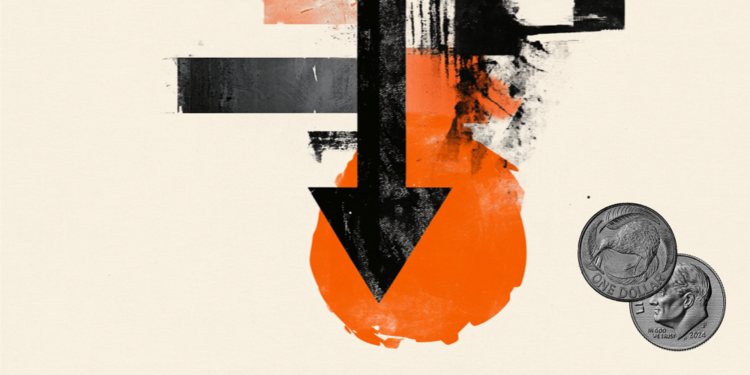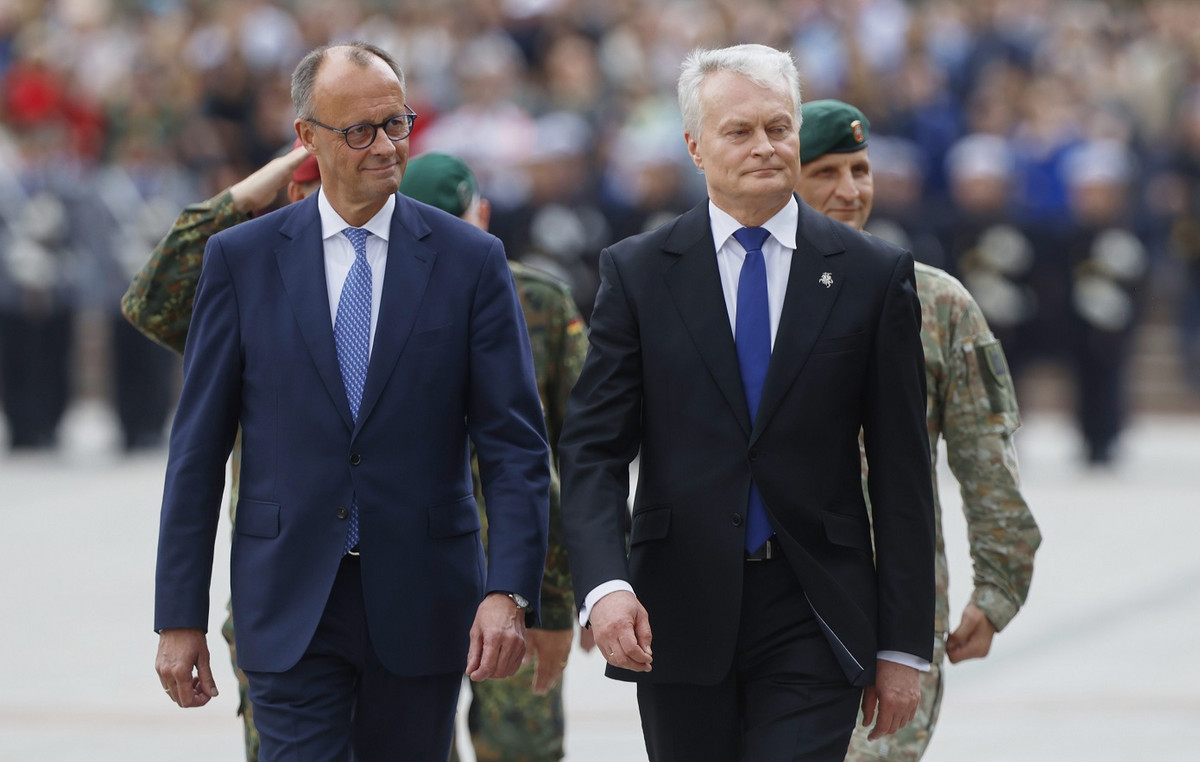THE dollar falls this Friday (28), heading to end the week with the third consecutive drop in 2022 with a favorable scenario for emerging markets and commodities linked, such as Brazil, with the prospect of high interest rates in U.S.
I o Ibovespa it has one day of corrections, and operates downward following an aversion to risks abroad as the market prices the expectation of higher interest rates in the United States, but it should have the third consecutive week of increase.
At around 1:43 pm, the US currency retreated 0.49% to R$ 5.396. The first-maturity dollar contract traded on the B3 had a drop of 0.19%, to R$ 5,395. At the same time, the Ibovespa dropped 0.55%, to 111,994 points.
Among the shares that make up the Ibovespa, the biggest increase was by Braskem, after Petrobras confirmed the cancellation of a secondary share offering, with commodities and healthcare sectors also rising. The main declines came from securities linked to retail.
On Thursday (28), the dollar closed down 0.26%, at R$ 5.424. The Ibovespa, on the other hand, rose 1.19%, to 112,611.65 points, the highest level since October 18, 2021.
Fed
The focus of investors this week was the monetary policy meeting of the central bank of the United States released on Wednesday (27).
The document did not bring great news to investors, with the Fed keeping interest rates in the range between 0% and 0.25%, but stating that it hopes to have the necessary conditions to raise rates “soon”. Expectations are high at the March meeting.
The milder tone of the statement even boosted the stock exchanges, but the indices fell with the stricter content of the institution’s president, Jerome Powell, at the press conference shortly afterwards.
In addition to being harsh, the speech of the leader of the American central bank left open how many times the interest rate can rise this year and when the balance sheet of US$ 9 trillion will start to be reduced.
The prospect of rising interest rates increases the attractiveness of fixed income over equities in the United States. At the same time, it can make investors seek more resilient and cheaper markets, such as Europe and emerging markets, and migrate to rising assets, such as commodities.
This Friday, it was reported that the Personal Consumption Expenditure (PCE) Price Index rose 5.8% in 2021, the highest since 1982, but with the December data in line with market expectations. .
“With the Fed stoking the hawkish fire, we expect the dollar to strengthen, but only moderately,” Citi strategists said in a report on Friday.
The bank said that while more aggressive swings by the Fed generally push down emerging assets, several developing countries have shown “continued momentum from positive data,” which could lead to inflows.
Any rise in interest rates in the country, however, may affect investments in Brazil, as it makes US Treasury bonds even more attractive to investors.
According to OHM Research, the market has reached the peak of pessimism with the Fed. Now, it is necessary to overcome the Omicron variant and the tension between Russia and NATO to achieve any recovery.
Commodities
This week, investors continued a process of migration to areas linked to commodities and for emerging markets, which favors Brazil and the real, as the Brazilian stock exchange has a large number of companies linked to the sector.
On the stock exchange, stocks such as Vale (VALE3) and Petrobras (PETR3 and PETR4) benefit from increases in iron ore and oil, and are important members of the Ibovespa.
Expectations of more pro-growth measures in the China, while bearish economic pressures persist, hopes are rising for a pick-up in demand for metals, analysts said, leading to higher prices.
In the case of oil, analysts at Goldman Sachs say that Brent oil prices are expected to exceed US$ 100 a barrel this year. According to them, the oil market remains in a “surprisingly large deficit” as the effect of the Ômicron variant of coronavirus in demand for the commodity is, so far, lower than expected. In addition, tensions in Ukraine affect prices.
Brazil
In the local scene, investors reverberate the release of economic data. The IGP-M rose 1.82% in January, an acceleration compared to December, but was below expectations. already the unemployment rate, measured by Pnad Contínua, fell in the quarter through November to 11.6%.
The increase in fiscal risk remains on investors’ radar. The text of budget 2022, sanctioned by President Jair Bolsonaro (PL), cut investments to the lowest level in history, to R$ 42.3 billion, but kept the funds for the secret budget, for the electoral fund and for salary readjustments intact.
along with the Fuels PEC, a market analyst defines that the perception is that the government is going for all or nothing, and should move towards more populist measures to increase its popularity until the elections.
According to the projection of the XP analysis team, the PEC can reduce the collection between R$ 70 billion and R$ 100 billion. However, the government is already discussing including only diesel in the text, without gasoline.
According to the analyst CNN Gustavo Uribe, the discussion took place after the market resisted as it could generate a loss of revenue of R$ 70 billion, and is seen as a “fiscal bomb”. With the exemption restricted to diesel, the loss forecast drops to R$ 20 billion.
For next week, investors’ attention will be on the Monetary Policy Committee meeting (Copom), which will decide on a possible new hike in the basic interest rate, the Selic rate.
In this session, the central bank will auction up to 15,000 traditional foreign exchange swap contracts to roll over on April 1, 2022.
Test your knowledge about the Ibovespa
Let’s start with an easy one: what is the Ibovespa?
Who is responsible for calculating the Ibovespa?
What types of assets are eligible to be listed on the Ibovespa?
Which of these is NOT a criterion for a stock to enter the Ibovespa
How many shares are currently in the Ibovespa theoretical portfolio?
How often is the Ibovespa theoretical portfolio reviewed?
What is the most important stock on the Ibovespa?
What is the smallest share on the Ibovespa?
Each Ibovespa point is equivalent to 1 real. This statement is
What is the historical record for closing the Ibovespa?
Try again!
Tip: follow CNN Business to understand more about Ibovespa
Nice job!
You know a lot about the Ibovespa, but you could know a little more
Sensational!
Congratulations! Are you an Ibovespa expert?
*With information from Priscila Yazbek and Reuters
Reference: CNN Brasil
I am Sophia william, author of World Stock Market. I have a degree in journalism from the University of Missouri and I have worked as a reporter for several news websites. I have a passion for writing and informing people about the latest news and events happening in the world. I strive to be accurate and unbiased in my reporting, and I hope to provide readers with valuable information that they can use to make informed decisions.







